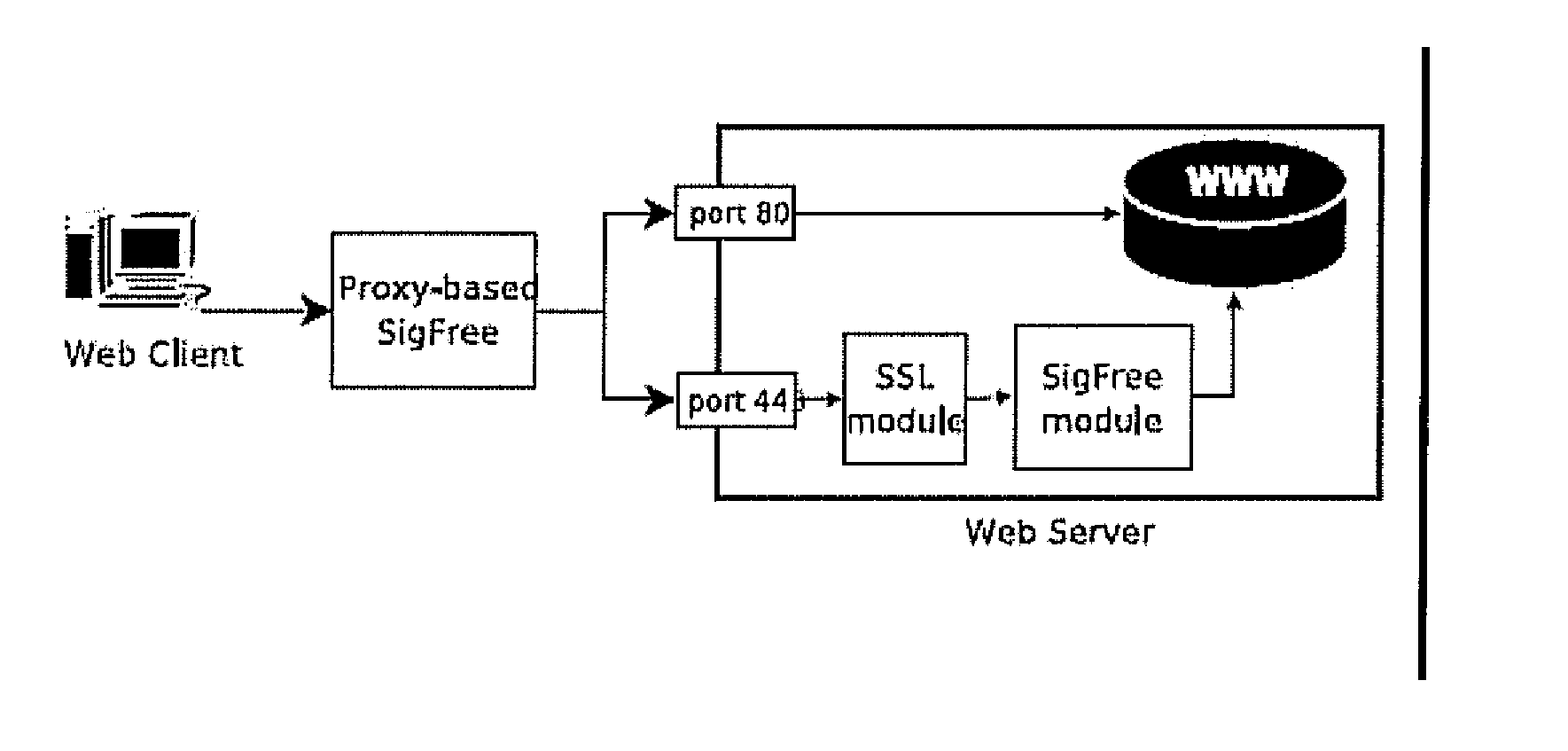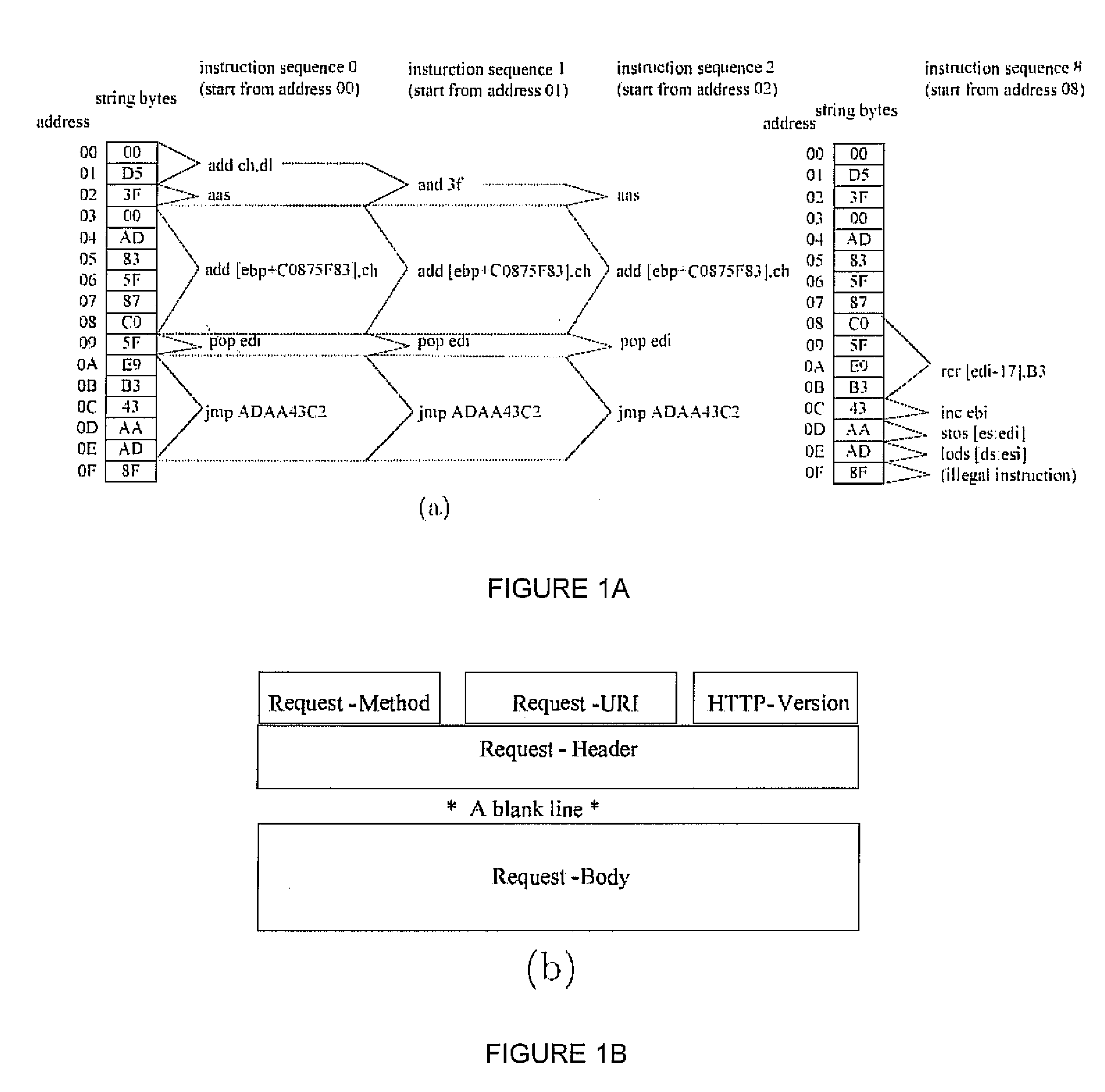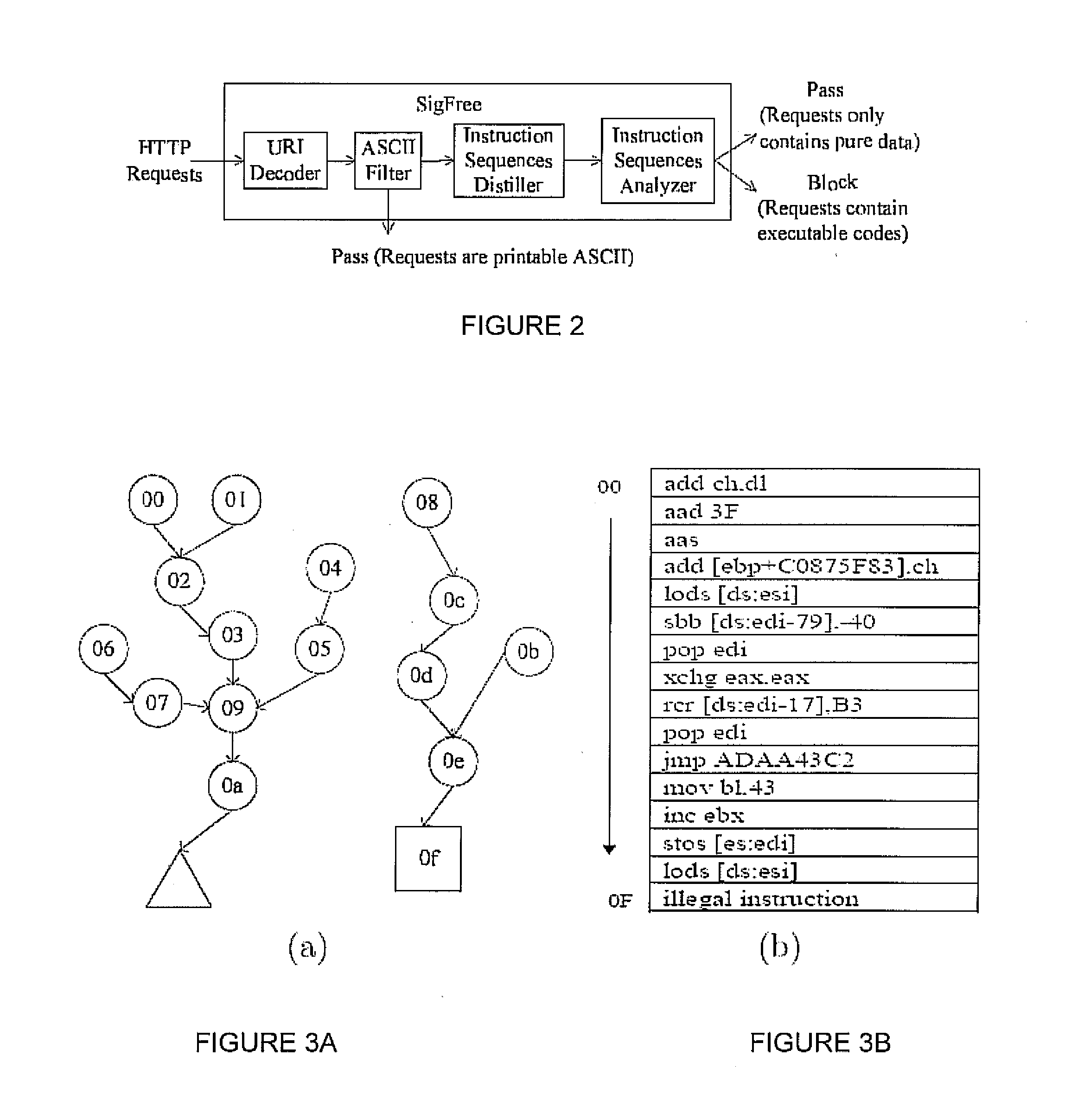Signature-free buffer overflow attack blocker
a buffer overflow and signature-free technology, applied in the field of computer network security, can solve the problems of affecting the behavior of the program itself, affecting the detection of buffer overflow, and requiring considerable research, and achieves the effects of low deployment and maintenance costs, negligible throughput degradation, and transparent server
- Summary
- Abstract
- Description
- Claims
- Application Information
AI Technical Summary
Benefits of technology
Problems solved by technology
Method used
Image
Examples
Embodiment Construction
[0034] This invention resides in a real time buffer overflow attack blocker for protecting Internet services. The invention, called SigFree, follows from the observation that “the nature of communication to and from network services is predominantly or exclusively data and not executable code.”[11]. In particular, as summarized in [11]:
[0035] (a) on Windows platforms, most web servers (port 80) accept data only; remote access services (ports 111, 137, 138, 139) accept data only; Microsoft SQL Servers (port 1434) accept data only; workstation services (ports 139 and 445) accept data only.
[0036] (b) On Linux platforms, most Apache webservers (port 80) accept data only; BIND port 53) accepts data only; SNMP (port 161) accepts data only; most Mail Transport (port 25) accepts data only; Database servers (Oracle, MySQL, PostgreSQL) at ports 1521, 3306 and 5432 accept data only.
[0037] Since remote exploits are typically executable code, this observation indicates that if we can precisel...
PUM
 Login to View More
Login to View More Abstract
Description
Claims
Application Information
 Login to View More
Login to View More - R&D
- Intellectual Property
- Life Sciences
- Materials
- Tech Scout
- Unparalleled Data Quality
- Higher Quality Content
- 60% Fewer Hallucinations
Browse by: Latest US Patents, China's latest patents, Technical Efficacy Thesaurus, Application Domain, Technology Topic, Popular Technical Reports.
© 2025 PatSnap. All rights reserved.Legal|Privacy policy|Modern Slavery Act Transparency Statement|Sitemap|About US| Contact US: help@patsnap.com



